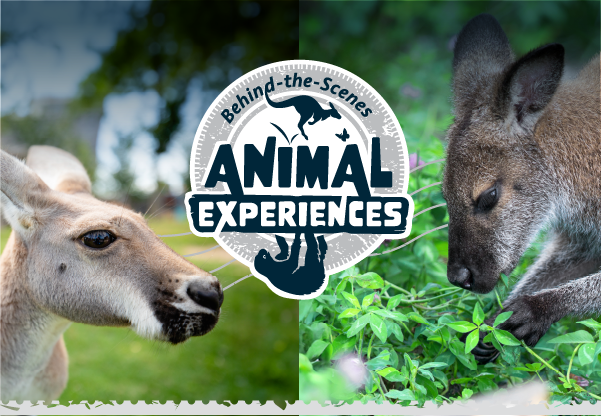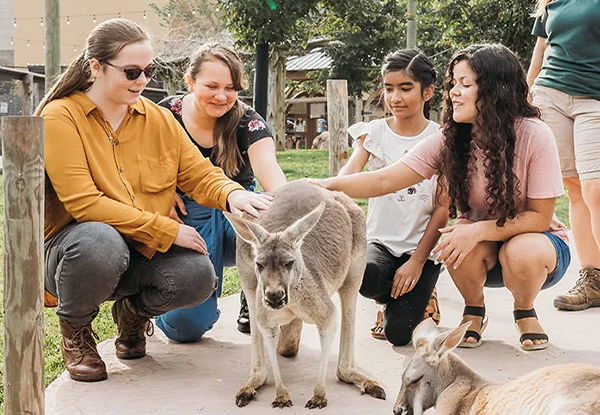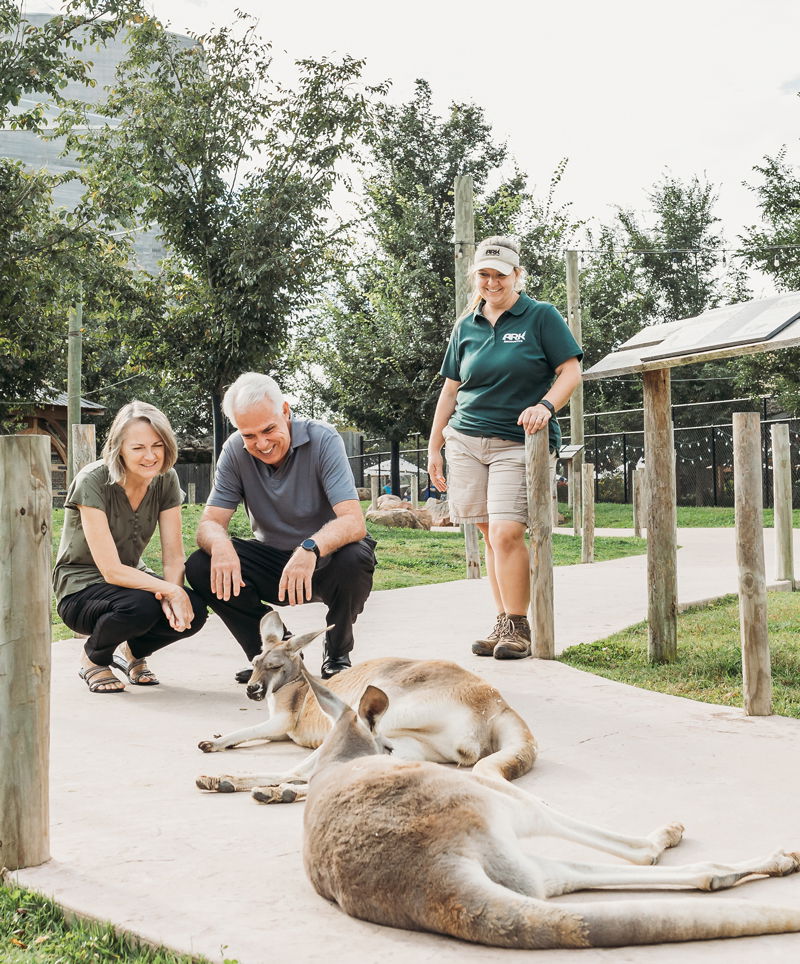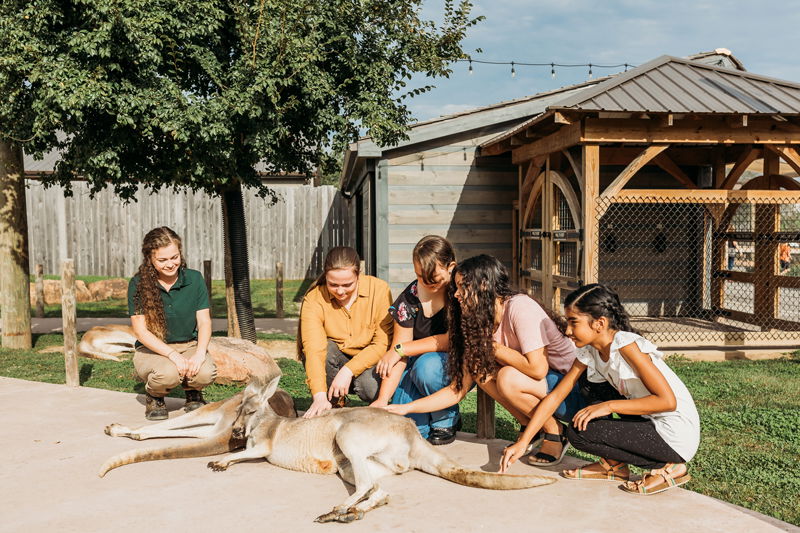Kangaroo Walkabout
Meet one of Australia’s largest and most iconic animals up close for FREE! Discover more about the Kangaroo Walkabout and red kangaroos below.

Behind-the-Scenes Macropod Experience
Feed, touch, and take photos with our kangaroos and wallabies during this up-close experience!
Learn More
Walkabout Feed
Meet and feed our red kangaroos and Bennett’s wallabies for an unforgettable close-up experience! Feed cups are $5 each.
Available seasonally, mid-October through May, from 12–1 p.m., weather permitting.

When Is the Walkabout Open?
Kangaroo Walkabout times vary by season. When you arrive, check your daily schedule for times or ask a zoo staff member. Be aware that the walkabout will close during inclement weather.
Can I Touch the Kangaroos?
For guest and kangaroo safety, you must stay on the path as you walk through the walkabout. If the kangaroos choose to approach you on the path, you may touch them! However, if they do not approach the path, we respect their choice not to be touched. Be aware that touching is always at the discretion of our zoo staff.
Can I Still See the Kangaroos If the Walkabout Is Closed?
Yes! The kangaroos are always visible even when the walkabout is closed. There is also viewing of their indoor enclosure if they are inside due to inclement weather.
Red Kangaroo
The world’s largest marsupials can jump six feet in the air, cover 30 feet in one leap, and reach speeds of 40 mph!
Day of Creation: six
Biblical Kind: macropod (includes kangaroos, tree kangaroos, wallaroos, dorcopsis, pademelons, wallabies, and quokkas)
Status: least concern
Height: 3 (female)–6 (male) feet
Weight: 80 (female)–200 (male) pounds
Habitat: forests, scrubs, and grasslands of Australia
Lifespan: 20–25 years
Diet: grasses, forbs, and shrubs
Family Life: live in mobs comprised of a dominant male and his females and offspring
Reproduction: single joeys are born after a 1-month gestation
Fun Facts
Macropods are marsupials, meaning that females carry their young in pouches and are able to pause their pregnancies if needed. Despite being blind, deaf, hairless, and the size of a jellybean when born, joeys are able to crawl into their mothers’ pouch, where they spend the next several months developing.

If macropods move faster than 10 mph, hopping is their most efficient form of movement. When kangaroos bend their legs at the end of each bounce, the energy stored in their tendons contributes to the next hop. Hopping also aids their breathing, since their abdominal organs “flop” inside their bodies and push air out of their lungs with the impact of each landing.
Studies have shown that kangaroos maintain a constant number of hops per minute. Regardless of how fast they speed up, they simply take longer and longer hops.
Kangaroos can lean back on their tails to reach food up high or to box each other. They have powerful kicks and can easily kill a dingo or break a human leg with one powerful jab.
Male kangaroos are called “boomers” or “jacks,” whereas females are called “flyers” or “jennies.” Male red kangaroos are much larger than females and are often more vibrantly red in color. Females are often grayer in color, leading to the nickname “blue flyers.”